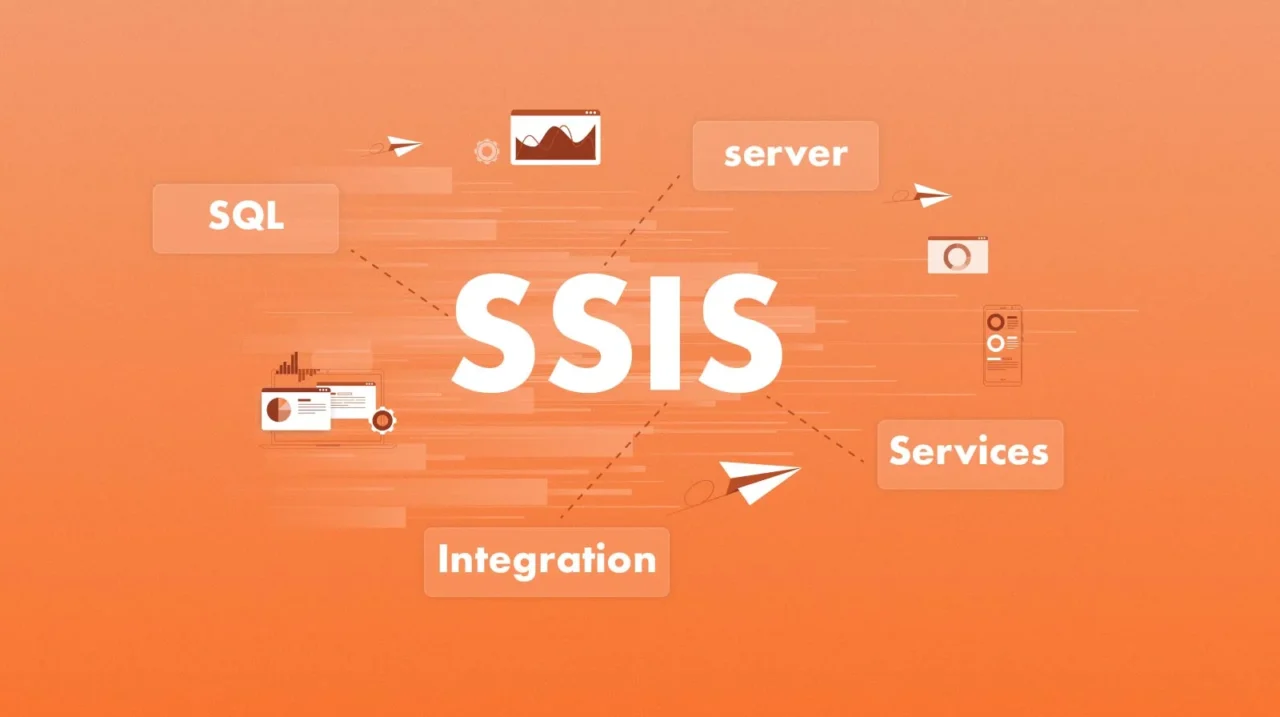Frequently Asked SSIS Interview Questions + Answers [UPDATED 2025]


Prepare for your SSIS and data integration interviews with unlimited mock interviews, instant AI feedback, and confidence-boosting practice. Start practicing now on Huru.ai
The Ultimate Guide to SSIS Interview Success in 2025 🚀
SQL Server Integration Services (SSIS) remains a cornerstone for ETL, data integration, and business intelligence roles. As organizations increasingly migrate to hybrid and cloud data environments, SSIS expertise is more valuable than ever. This 2025 guide delivers not just the essential SSIS interview questions, but also advanced, scenario-based, and cloud-integrated topics missed by standard lists. Whether you’re a first-timer or a seasoned pro, you’ll find the actionable insights and expert answers you need to stand out in your next interview.
In this comprehensive guide, you’ll find:
- Core and advanced SSIS interview questions — with detailed answers
- Scenario-based Q&A and real-world troubleshooting tips
- Coverage of cloud, CI/CD, and data security trends for 2025
- Actionable resources and hands-on practice with Huru’s AI-powered mock interviews

1. Mastering SSIS Fundamentals: The Core Interview Questions
Every SSIS interview will begin with the foundational concepts. Here are the essentials you must master, complete with crisp, actionable answers:
| Question | Sample Answer |
|---|---|
| What is SSIS and how is it used in modern data integration? | SSIS is Microsoft’s ETL tool for data extraction, transformation, and loading. In 2025, SSIS is vital for migrating, integrating, and transforming data across on-premises and cloud (Azure, AWS) systems, supporting real-time and batch workflows. |
| Explain Control Flow vs. Data Flow in SSIS. | Control Flow manages the execution order of tasks (execution path), while Data Flow handles the movement and transformation of data between sources and destinations. |
| How does SSIS differ from DTS? | SSIS is far more advanced, supporting complex transformations, improved error handling, advanced logging, and seamless integration with SQL Server and cloud services. DTS is now deprecated. |
For more foundational technical questions, check out our Data Science Interview Prep guide.
2. Beyond the Basics: Advanced SSIS Interview Questions for 2025
To stand out, you’ll need to demonstrate knowledge of advanced SSIS features and current industry trends. Here are key advanced questions that are appearing in 2025 interviews:
- How do you orchestrate SSIS packages in Azure Data Factory?
Use Azure Data Factory’s SSIS Integration Runtime (IR) to run, monitor and schedule SSIS packages in the cloud. Deploy to Azure SQL DB or SSIS Catalog and manage via ADF pipelines. - Describe a scenario with real-time ETL using SSIS and CDC.
Enable Change Data Capture (CDC) on source tables, use CDC tasks in SSIS, and design flows for minimal latency. Schedule frequent runs or event-based triggers for near real-time processing. - How would you integrate SSIS with DevOps for CI/CD?
Use source control (Git), automate builds/tests with Azure DevOps or GitHub Actions, and deploy using SSIS Catalog APIs or Azure Pipelines for robust CI/CD integration. - What are best practices for SSIS package security in 2025?
Implement SSIS package protection levels, limit sensitive information, use Azure Key Vault for secrets, configure row-level and dynamic data masking, and ensure compliance (GDPR, HIPAA) in data flows.
💡 Key Takeaway
Demonstrate fluency with cloud and hybrid SSIS scenarios. Employers increasingly seek expertise in Azure Data Factory integration, automated deployment, and secure data handling.
Want to expand your technical leadership? See: CTO Interview Questions
3. Real-World SSIS Scenarios & Troubleshooting (Q&A Format)
Scenario-based questions are now favored by interviewers for revealing your practical insight. Practice answering in a structured, concise format:
- Q: How do you debug a failing SSIS package deployed to a production environment?
A: Use SSIS logging, review event/error output, employ checkpoints to resume, enable data viewers, and leverage catalog reports for detailed diagnostics. For cloud deployment, integrate with Azure Monitor. - Q: What steps do you take to optimize SSIS package performance with large datasets?
A: Minimize transformations, use fast-load options, partition data, avoid blocking components, increase buffer size, and parallelize data flows. - Q: How do you handle sensitive data in SSIS packages?
A: Set appropriate protection levels, store sensitive info externally (e.g., Azure Key Vault), and encrypt data at rest and in transit. - Q: Describe a solution for late-arriving dimensions in a data warehouse ETL process.
A: Use SSIS Slowly Changing Dimension (SCD) transformations, audit tables, and design surrogate key management strategies to gracefully handle late data.
💡 Key Takeaway
Employ structured troubleshooting — break down problems, use SSIS native diagnostics, and always document your solution steps for reusability and knowledge transfer.
For more on leveraging data-driven insights, read: Data-Driven Interview Success with AI.
4. Cloud & Hybrid SSIS: What’s New in 2025?
Many organizations are moving SSIS workloads to the cloud or running hybrid data pipelines. Be ready for questions such as:
- How do you migrate on-prem SSIS packages to Azure?
Deploy to Azure Data Factory using SSIS IR, refactor connections for cloud sources/targets, and leverage Azure Active Directory for secure authentication. - What are the challenges and solutions for SSIS in containerized environments (Docker/Kubernetes)?
Ensure container images have all required drivers, configure environment variables for dynamic configs, use shared storage for package catalogs, and automate deployment with CI/CD pipelines. - What’s the role of SSIS Data Flow in handling semi-structured data (JSON, XML, NoSQL) in 2025?
Use Data Flow’s new connectors and transformation components for parsing, validating, and mapping semi-structured sources, often required in modern integration tasks.
💡 Key Takeaway
Show real-world expertise by discussing cloud migration, hybrid orchestration, and handling modern data formats — these skills are in high demand in 2025.
Want to boost your technical communication? See: Technical Writer Interview Questions
5. Your Winning SSIS Interview Strategy: Practice, Feedback, Growth
You’ve reviewed the questions—now it’s time to practice under real interview conditions! Here’s how to cement your knowledge and build true confidence:
- Practice Mock Interviews — Simulate real SSIS interviews with Huru’s AI platform, receiving instant, actionable feedback and communication analysis.
- Review Your Performance — Use detailed feedback to identify strengths and areas for improvement.
- Target Weak Spots — Focus on advanced or scenario-based questions you struggled with in practice.
- Stay Updated — Follow new SSIS features, cloud integration trends, and best practices via Microsoft Docs and community forums.
- Network & Share — Join online SSIS/SQL Server communities to discuss real-world interview experiences and get peer advice.
💡 Key Takeaway
Leverage unlimited AI-powered interview practice to transform your preparation into job-winning confidence. Don’t just read—practice, refine, and win!
6. Watch: Top SSIS Interview Questions & Answers (2025 Edition) 📺
Sometimes, seeing and hearing real explanations is the best way to learn. Watch this highly recommended video for step-by-step walkthroughs of SSIS interview questions and practical advice for 2025:
Video: SSIS Interview Questions and Answers | Best Practices for SSIS Configurations – TechBrothersIT (YouTube)
7. Frequently Asked Questions About SSIS Interviews (2025)
- How do I prepare for an SSIS interview if I have little production experience?
Start with the basics, practice hands-on, and focus on scenario-based Q&A. Use Huru’s platform for unlimited mock interviews and feedback to accelerate your learning curve. - Are cloud and DevOps questions now standard in SSIS interviews?
Yes—expect to discuss Azure Data Factory, CI/CD, containerization, and integration with other cloud tools. - How do I stay up to date on SSIS trends and new interview topics?
Follow Microsoft’s official documentation, active SSIS blogs, and community forums. Join LinkedIn groups focused on SQL Server and Data Engineering. - Can I use AI tools to practice for technical interviews?
Absolutely! Platforms like Huru provide AI-driven feedback, ensuring you get real-time, actionable advice tailored to your answers and communication style.
Still have questions? Explore more at Huru’s official site or find peer-tested tips in our Investment Banking Interview Questions post.
About the Author
Elias Oconnor is a senior content writer at Huru.ai, specializing in technical interview prep and career confidence. His mission: to help job seekers master both the art and science of interview success, blending deep research with actionable insights.


 Apr 13,2022
Apr 13,2022  By Elias Oconnor
By Elias Oconnor